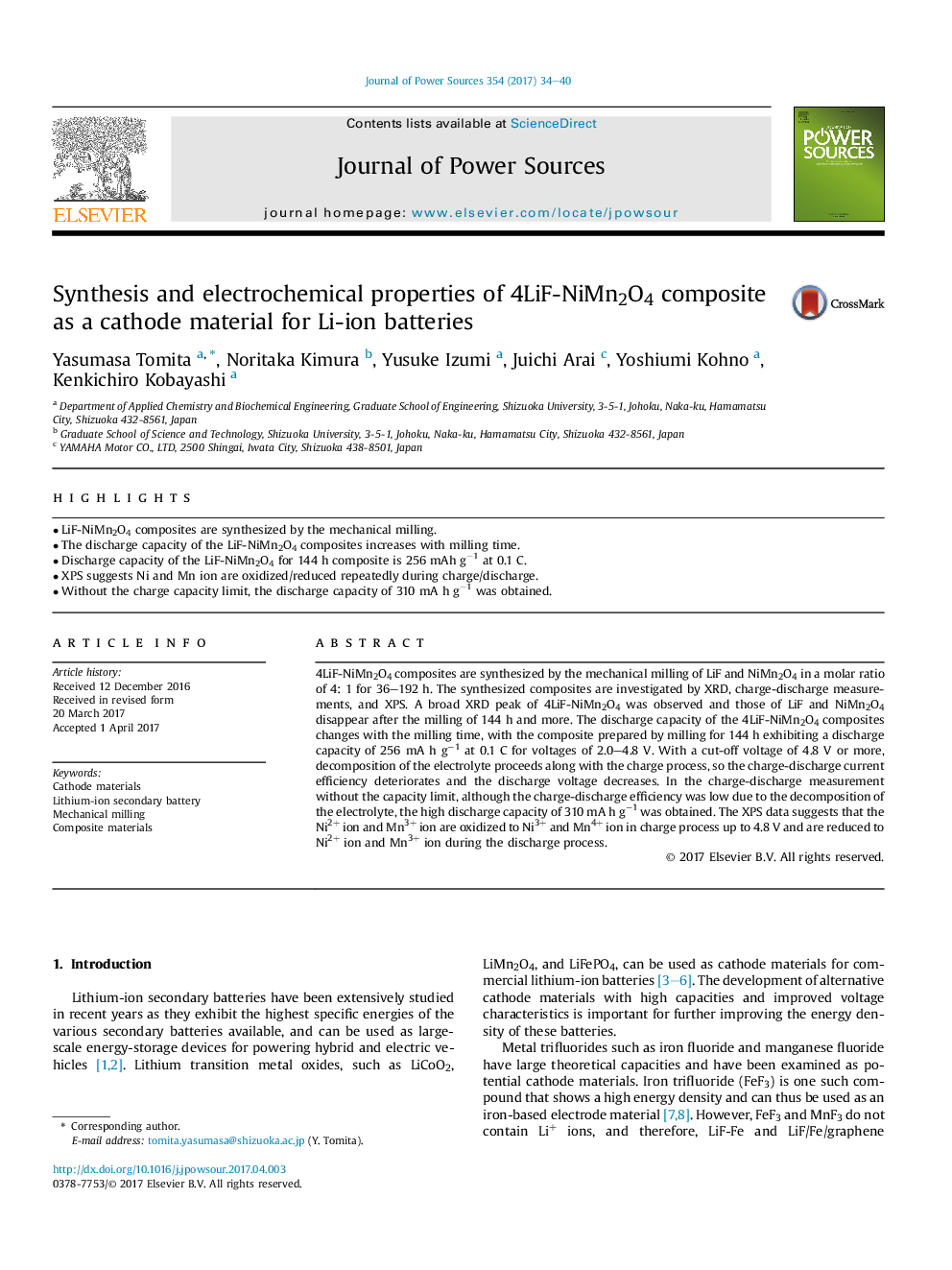| Article ID | Journal | Published Year | Pages | File Type |
|---|---|---|---|---|
| 5149335 | Journal of Power Sources | 2017 | 7 Pages |
Abstract
4LiF-NiMn2O4 composites are synthesized by the mechanical milling of LiF and NiMn2O4 in a molar ratio of 4: 1 for 36-192 h. The synthesized composites are investigated by XRD, charge-discharge measurements, and XPS. A broad XRD peak of 4LiF-NiMn2O4 was observed and those of LiF and NiMn2O4 disappear after the milling of 144 h and more. The discharge capacity of the 4LiF-NiMn2O4 composites changes with the milling time, with the composite prepared by milling for 144 h exhibiting a discharge capacity of 256 mA h gâ1 at 0.1 C for voltages of 2.0-4.8 V. With a cut-off voltage of 4.8 V or more, decomposition of the electrolyte proceeds along with the charge process, so the charge-discharge current efficiency deteriorates and the discharge voltage decreases. In the charge-discharge measurement without the capacity limit, although the charge-discharge efficiency was low due to the decomposition of the electrolyte, the high discharge capacity of 310 mA h gâ1 was obtained. The XPS data suggests that the Ni2+ ion and Mn3+ ion are oxidized to Ni3+ and Mn4+ ion in charge process up to 4.8 V and are reduced to Ni2+ ion and Mn3+ ion during the discharge process.
Related Topics
Physical Sciences and Engineering
Chemistry
Electrochemistry
Authors
Yasumasa Tomita, Noritaka Kimura, Yusuke Izumi, Juichi Arai, Yoshiumi Kohno, Kenkichiro Kobayashi,
